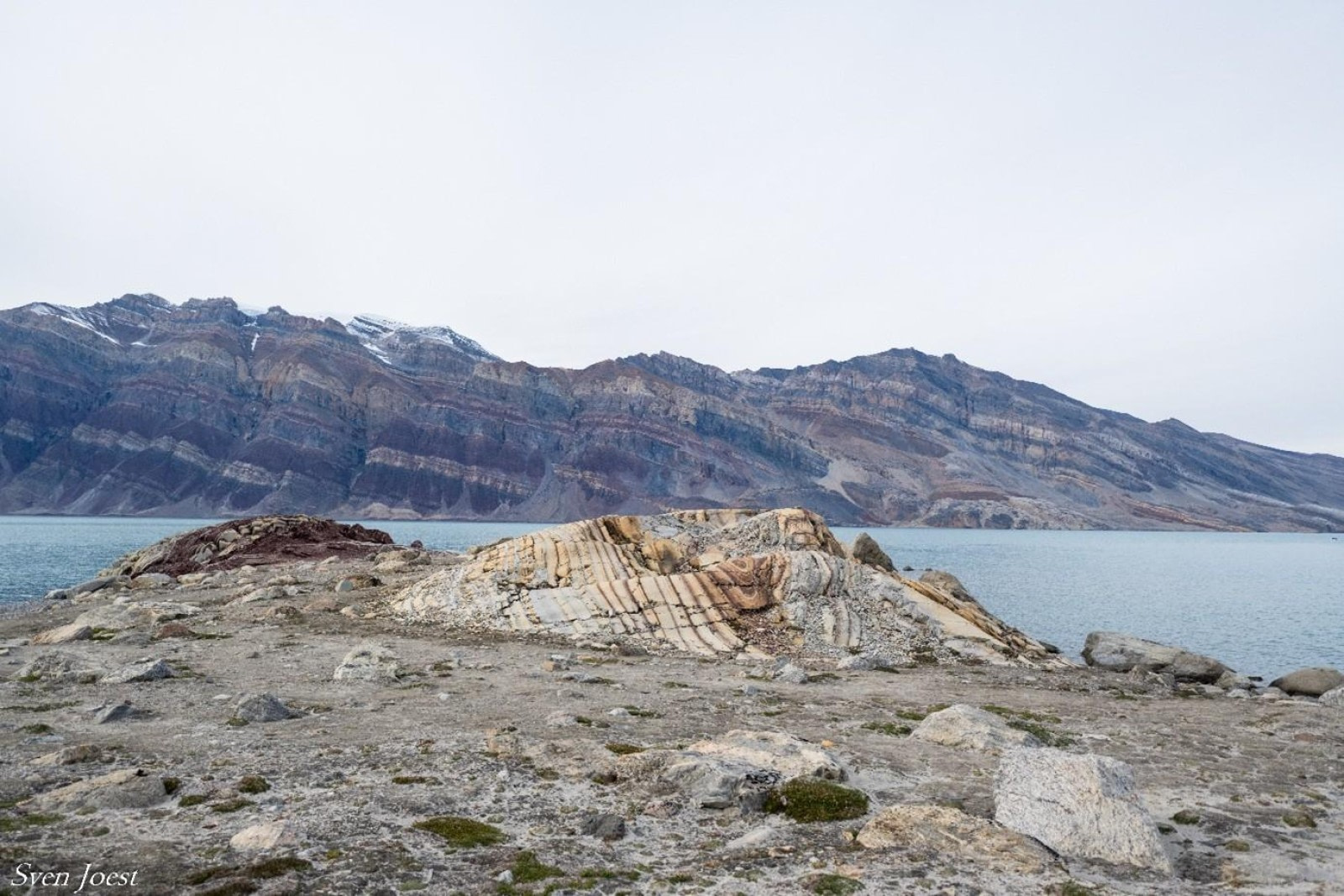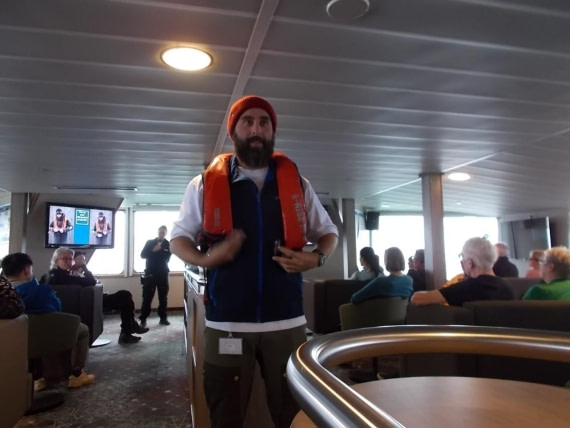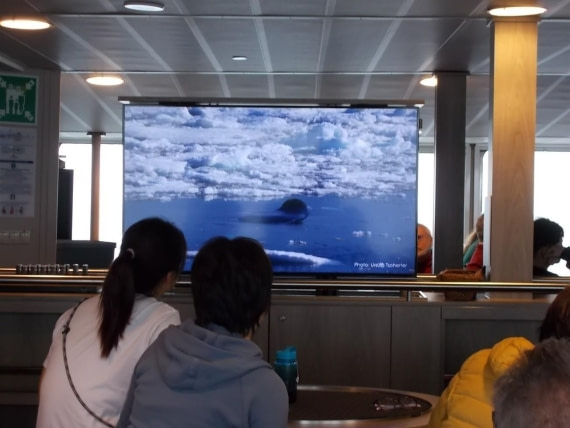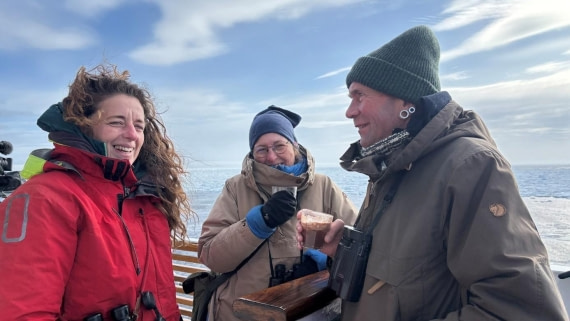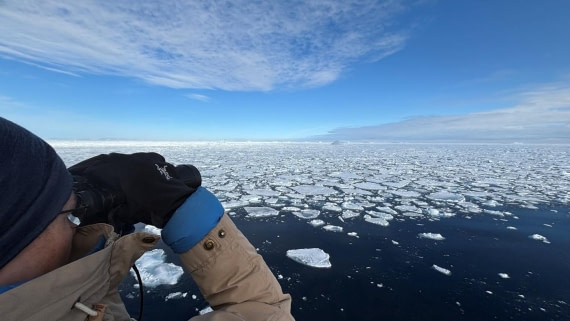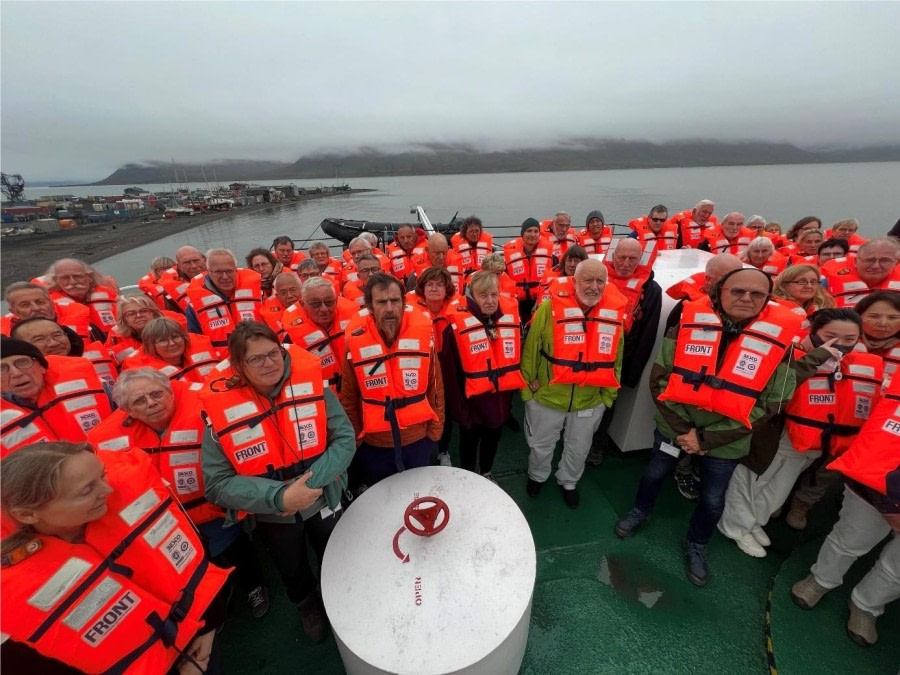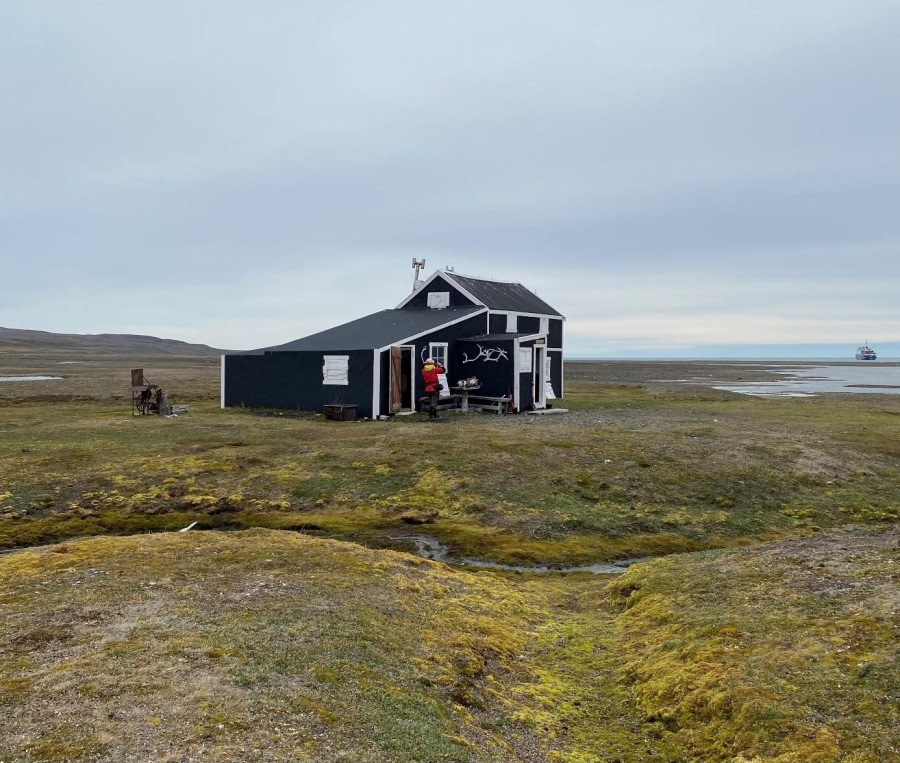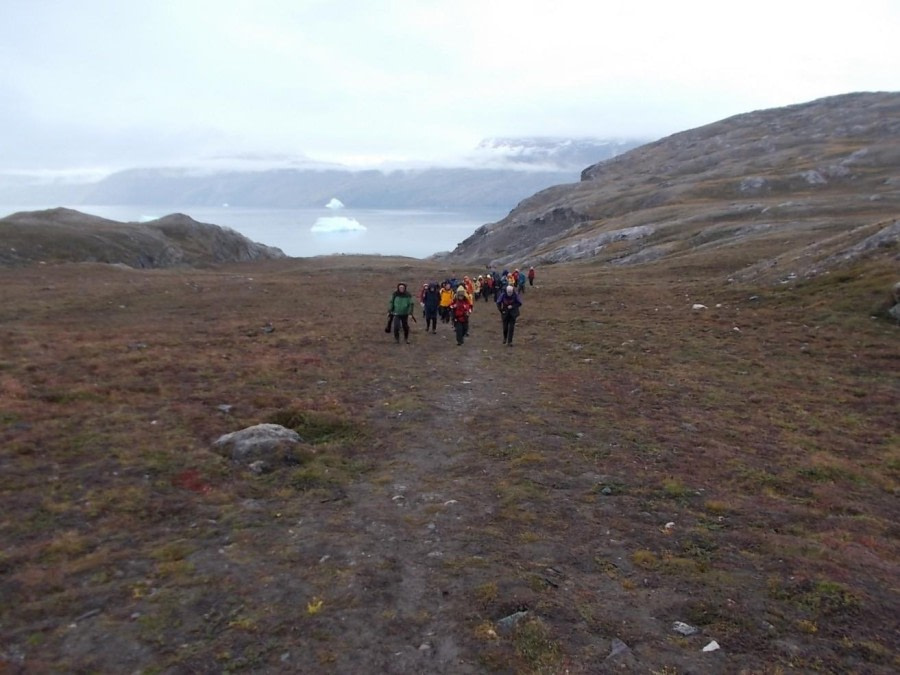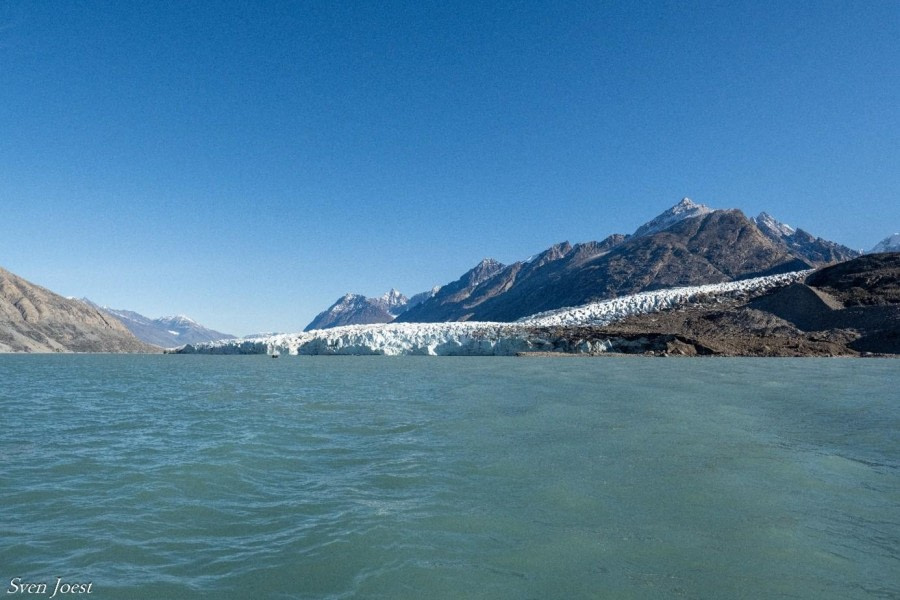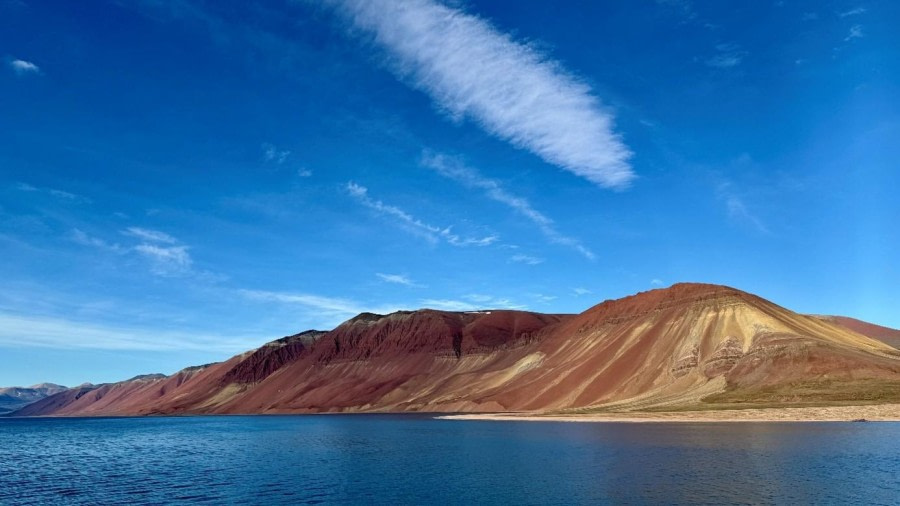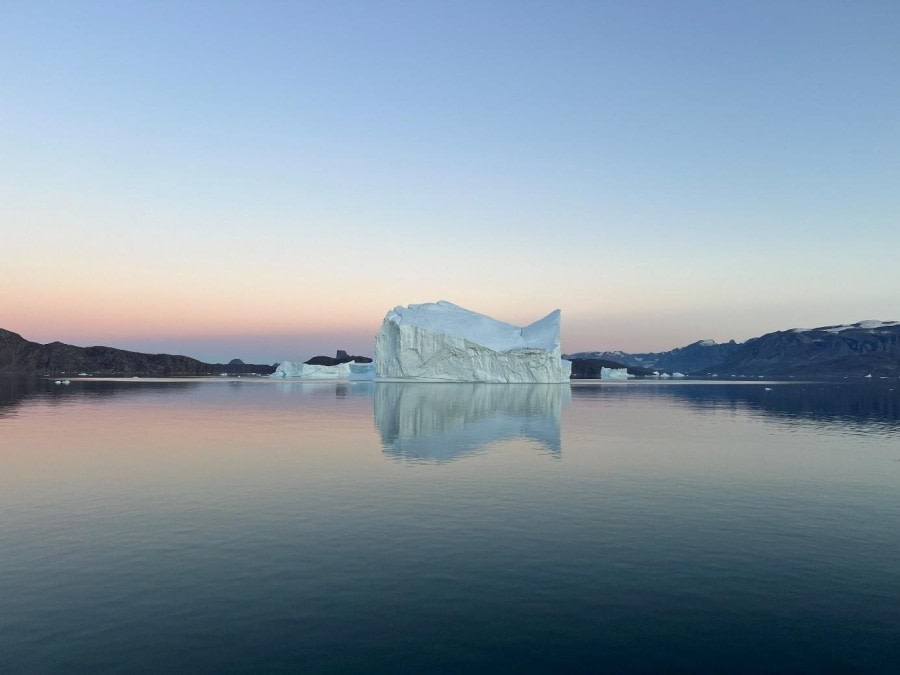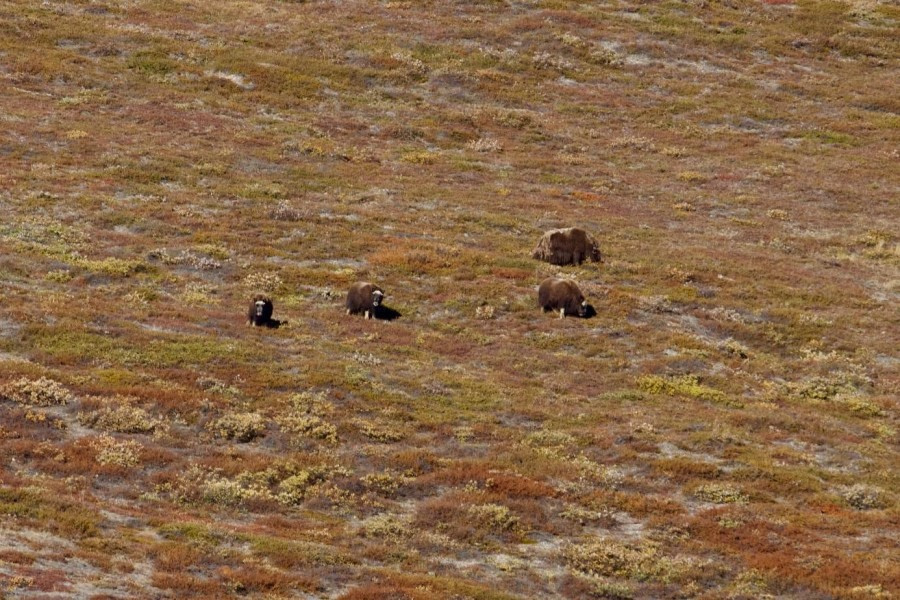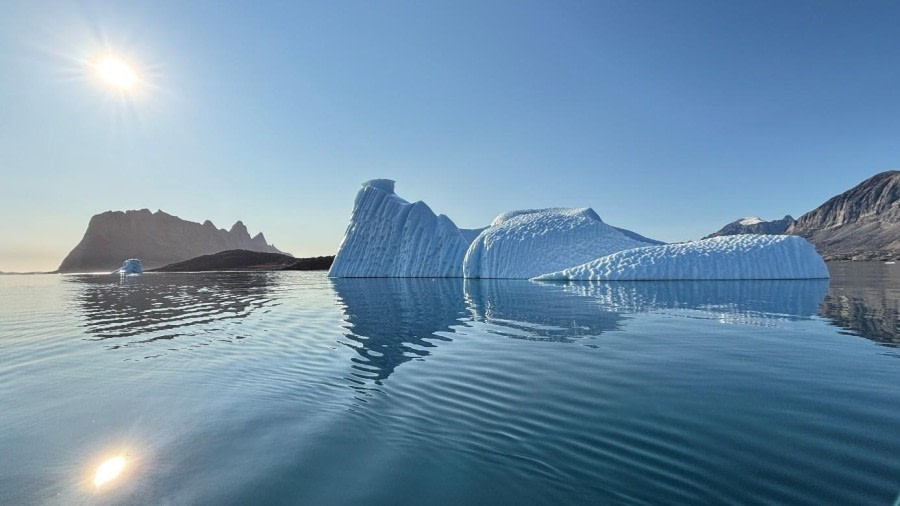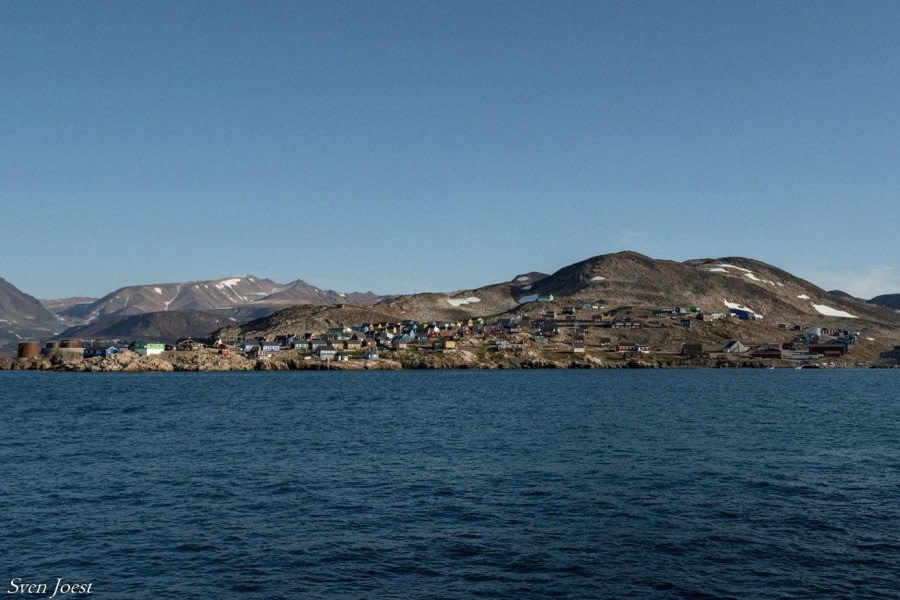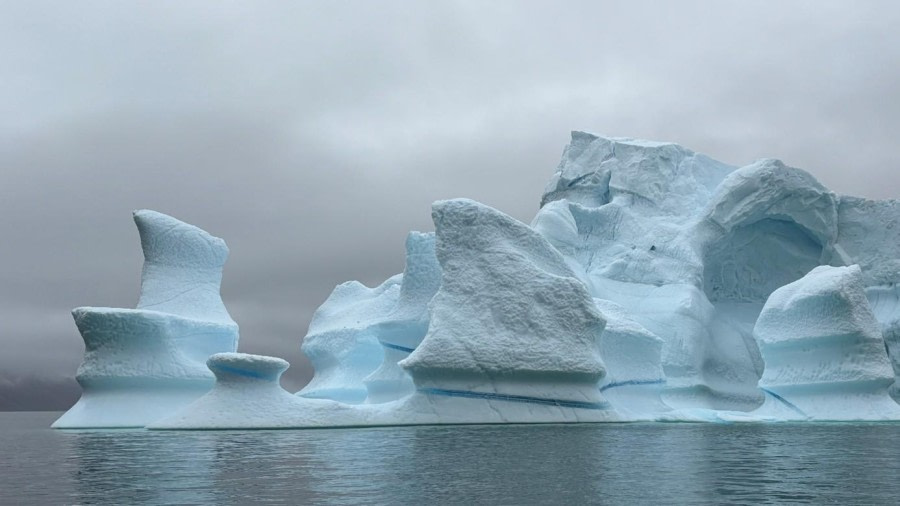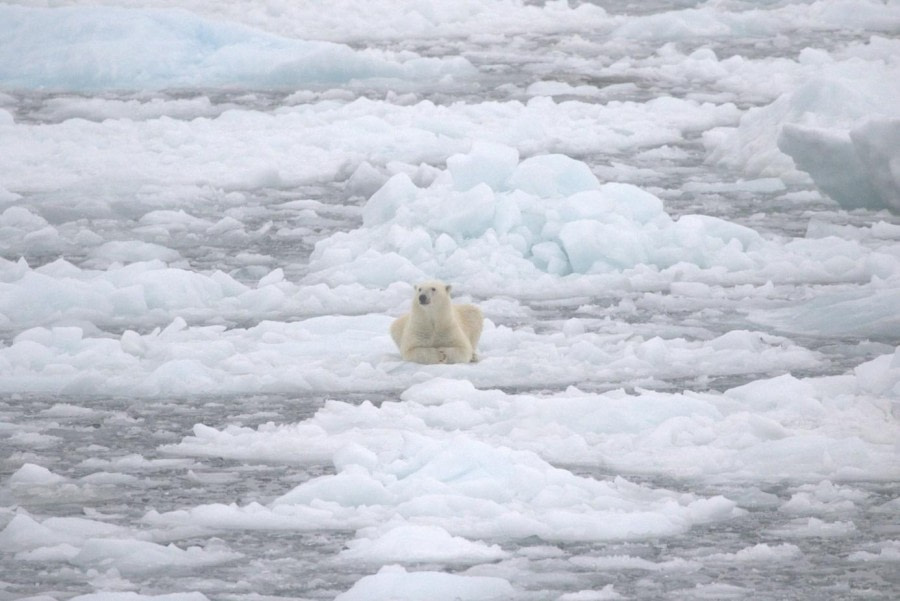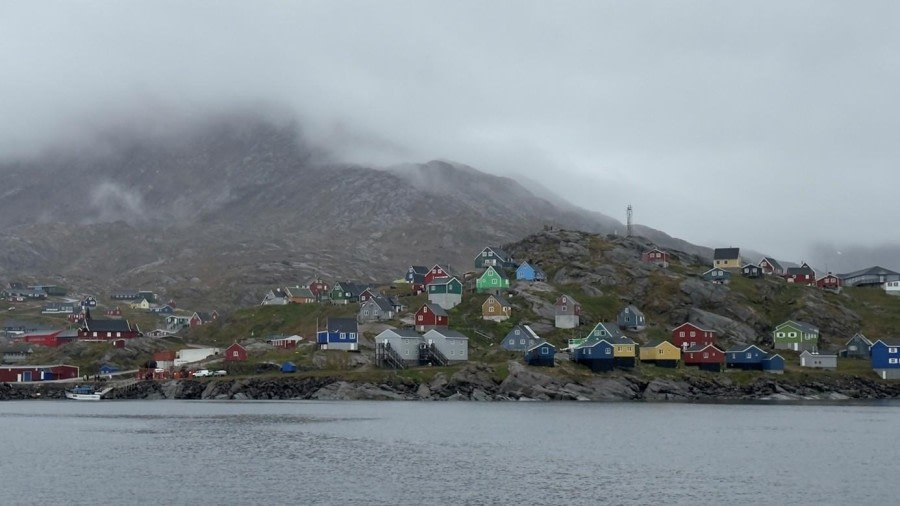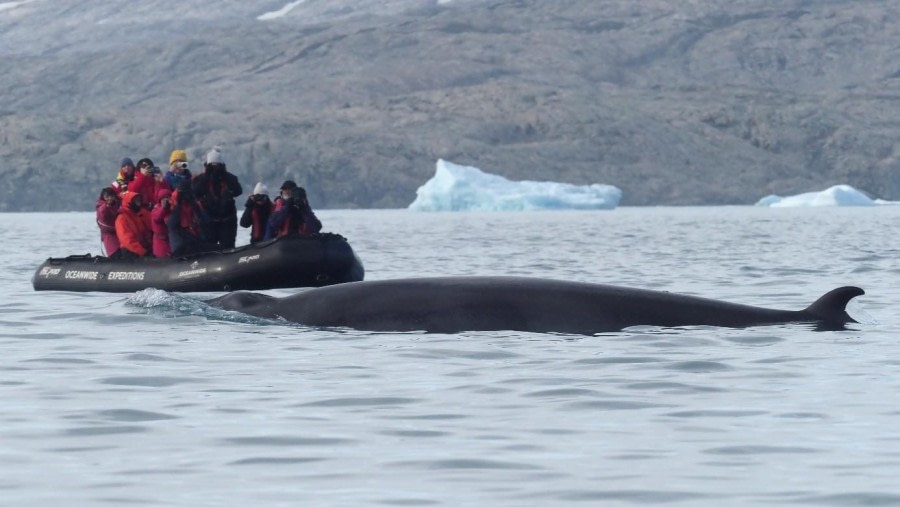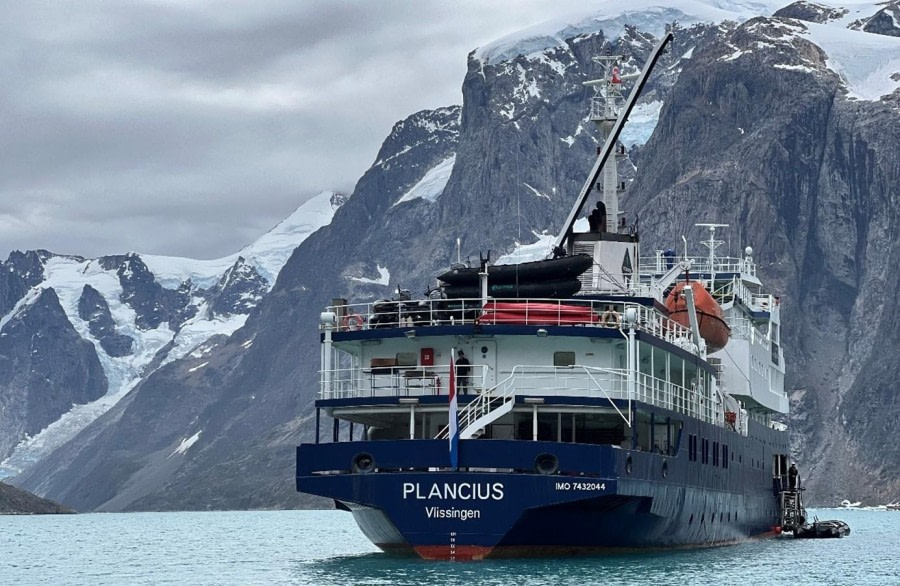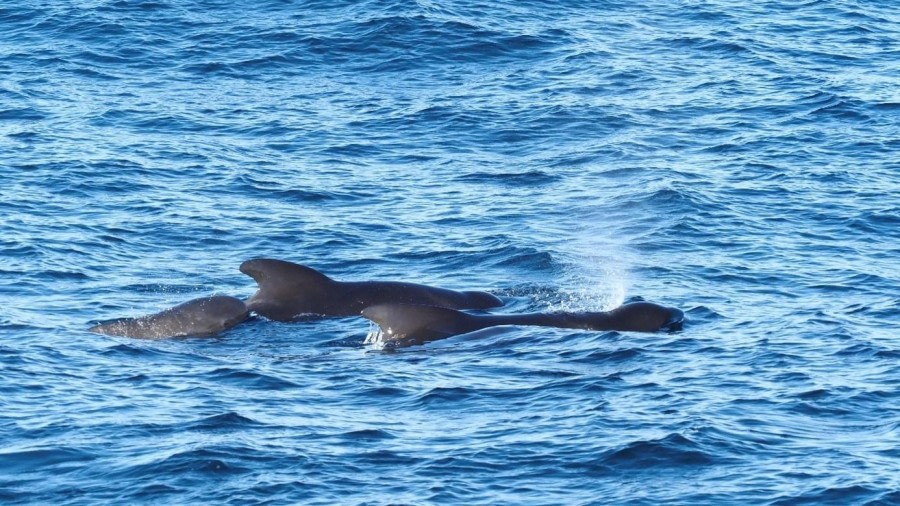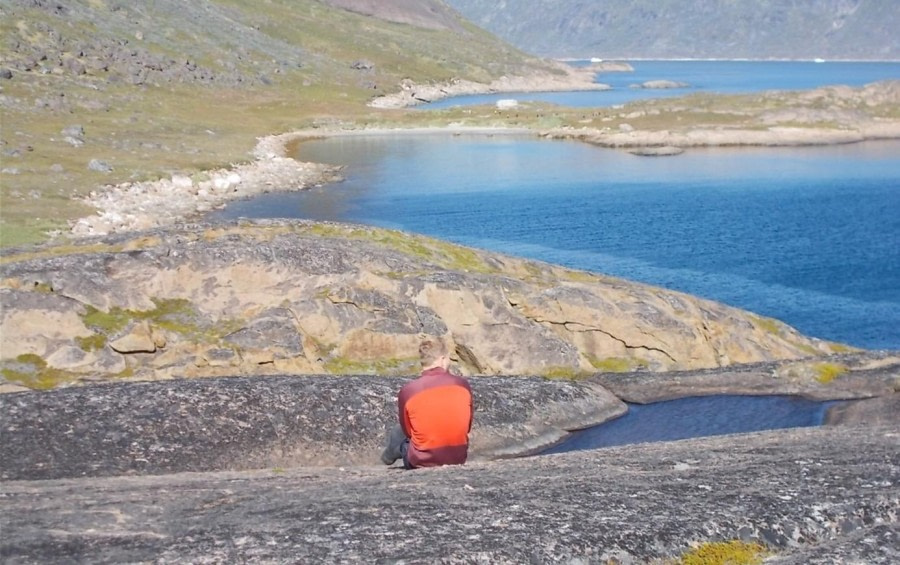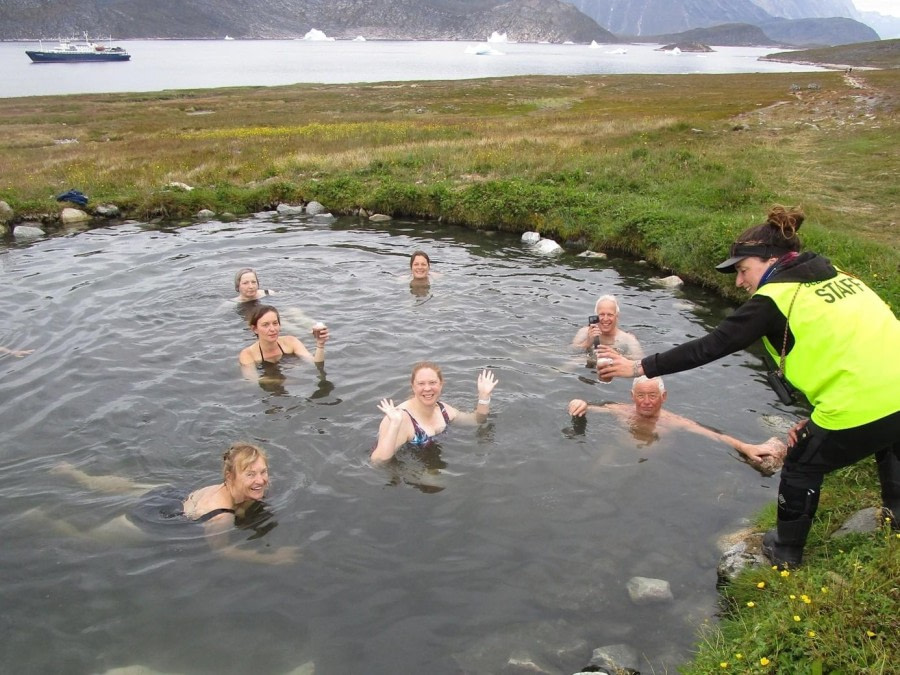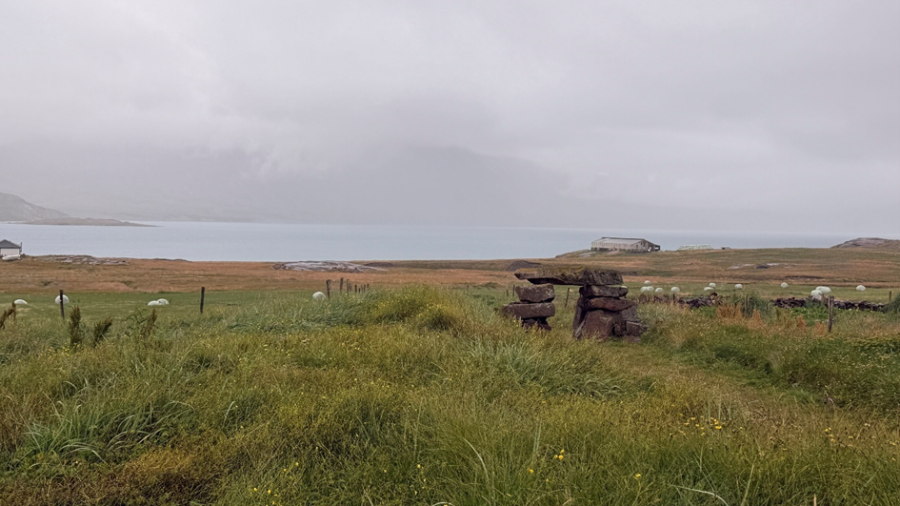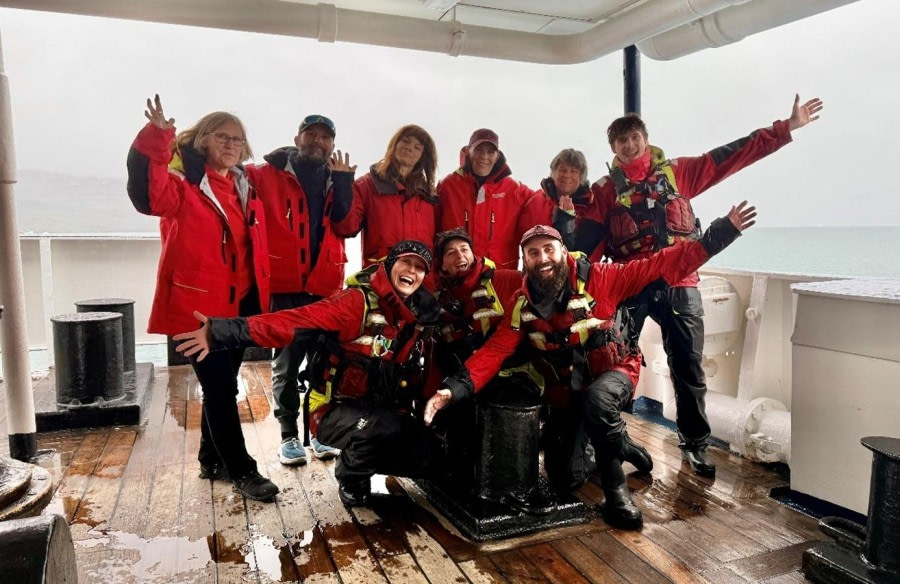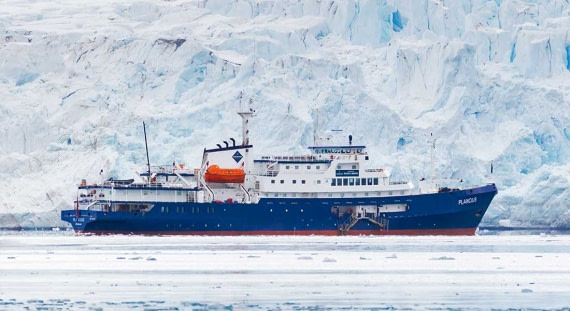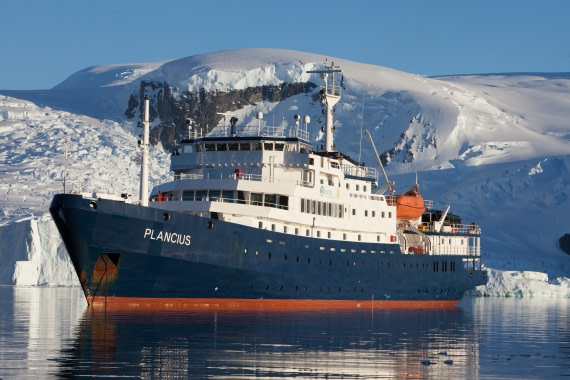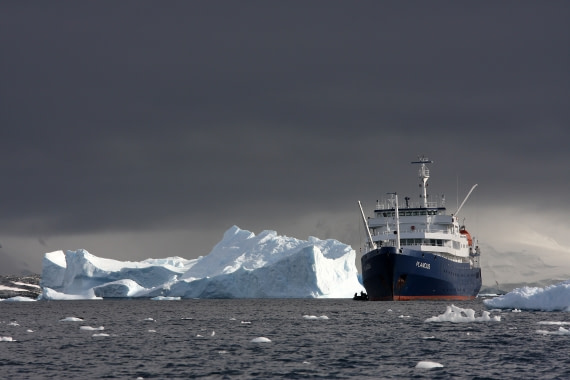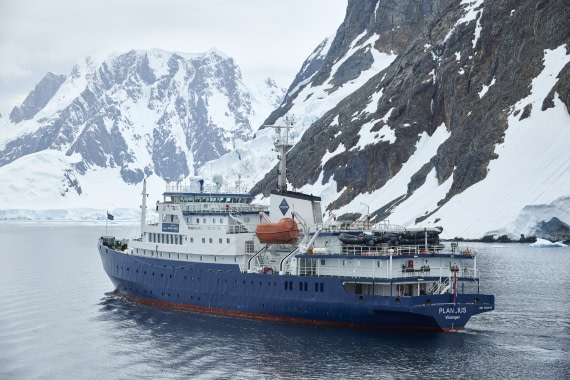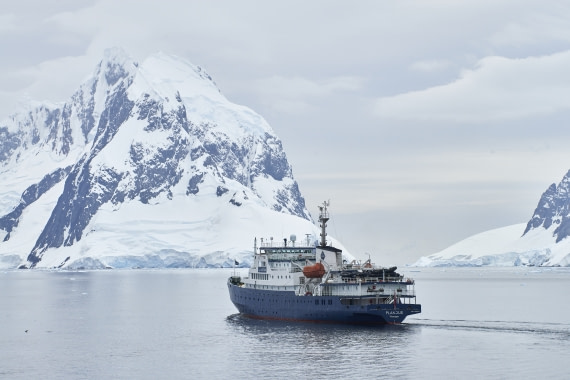| Date: | 13.08.2025 |
| Position: | 78°16.0’N / 015°24.7’E |
| Wind: | N2 |
| Weather: | Fog |
| Air Temperature: | +8 |
Travelers arrived from every corner of the globe—some having already spent nights soaking in the Arctic charm of Longyearbyen, others stepping off morning flights with anticipation still fresh in their eyes. By afternoon, the quay buzzed with excitement as we gathered beside the striking blue hull of Plancius, the vessel that would carry us towards and around Northeast Greenland for the next 20 days.
From four o’clock, the Oceanwide Expeditions team and crew greeted each guest with warm smiles and a sense of adventure that was contagious. Once cabins were discovered and bags unpacked, many gravitated to the lounge, where steaming cups of coffee and tea offered a comforting pause before the first official proceedings began.
The mandatory safety briefing quickly transformed from formality into adventure. Second Officer Ward led us out onto deck, where we stood in crisp Arctic air, clad in bright orange lifejackets. Against the backdrop of rugged mountains and icy waters, we listened, half-distracted by the views, half-awed by the thought that this was only the beginning.
Then came the moment of departure. Lines were cast, and Plancius began her slow glide away from Longyearbyen. Guests gathered at the railings, cameras in hand, quietly marvelling as the settlement shrank into the distance and the wilderness unfolded before us.
Soon after, the lounge filled with the hum of conversation and clinking glasses. Captain Levakov raised a toast, joined by our Expedition Leader, Pippa, and his dedicated team, each promising the days ahead would be filled with discovery and wonder. Dinner followed—a generous buffet that introduced us to the talents of the restaurant team, and to each other.
As twilight lingered, many chose to remain on deck, wrapped against the chill, unwilling to tear their eyes away from the stillness of the Arctic evening. Excitement mingled with exhaustion as one by one; we drifted off to our cabins, carrying with us the quiet thrill that tomorrow, the true adventure would begin.
